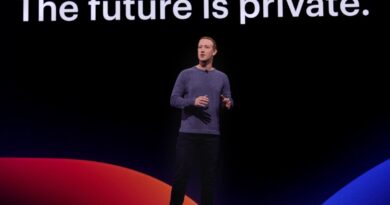7 VCs explain why the creator economy still has legs
The White House is briefing TikTokers about the war in Ukraine. A Twitch streamer’s PS5 giveaway sparks a bonafide riot. A 25-year-old YouTuber from North Carolina is one of Time Magazine’s 100 most influential people in the world.
If you underestimate the power of internet personalities, you’re not paying attention.
In Silicon Valley, “creator economy” used to be nearly as hot a buzzword as “AI” is right now. But even as content creators remain at the forefront of culture, the numbers behind venture capital investments tell a different story: Last year, the amount of money invested in creator economy companies dropped around 68% from the first to third quarter.
But creator economy investors remain unphased by what may seem like a steep decline. Several investors told TechCrunch+ that they knew that the entertainment industry would weather some twists and turns as the world exits pandemic-era lockdowns, and that trends in venture can be cyclical. Some investors even said that the creator economy has yet to reach full maturity.
To learn more about the state of the creator economy industry and how investors are thinking, we surveyed seven VCs about where the industry is headed, the rise of short form video, the shifting role of influencer marketing, and what the launch of new platforms portends.
We spoke with:
- Brian Harwitt, partner, Coventure
- Sasha Kaletsky, co-founder and managing partner, Creator Ventures
- Julia Maltby, principal, Flybridge
- Josh Constine, principal investor, SignalFire
- Katelin Holloway, founding partner, 776
- Ali Hamed, co-founder and general partner, Crossbeam Venture Partners
- Sima Gandhi, founder of Creative Juice; investor and advisor at G3
Brian Harwitt, partner, Coventure
Is the accelerated launch of new Twitter competitors a boon or an impediment to creator success?
Competition is good for creators since the platforms will have to compete for the creators’ time, which is a limited resource. To attract and keep creators, platforms will have to continue to offer monetization opportunities, which will spur potential bidding wars — as we saw with Kick and Twitch.
The creator economy has seen a slowdown in venture funding over the last few years. Did you anticipate this, and how are you preparing your portfolio companies to navigate a crowded market with less available capital?
The growth in the creator space was fueled in two parts: by COVID and the boom in e-commerce (the primary advertiser in the creator economy). People have largely returned to their ordinary lives and e-commerce has reverted to its usual pace, so the slower growth of the creator space is not surprising.
Despite this, we still expect significant growth over the next few years, and believe the market has yet to reach maturity. The best companies still have access to capital, while slower-growing businesses are preserving the cash they have.
Many VCs backed long-tail creator businesses or ones with a web3 focus, which have largely struggled to gain traction, so their attention has shifted to other areas such as AI.
What do you see as differentiated business models in this space given the intense competition?
Differentiated business models are ones that can either service the largest creators or service the long-tail with minimal human touch required.
What kinds of creator economy companies are you most excited to invest in right now?
We are excited about companies that are providing access to capital or some form of predictable monetization. We anticipate that predictable monetization and monetization infrastructure will continue to make the creator economy more investable for debt and equity investors alike.
Will the economics of the digital economy be better for creators and creator-focused startups in the back half of 2023 than the first was? How will 2024 compare to 2023?
A rising tide raises all ships, so what’s good for the creator is good for the creator-focused startup. With all of the changes in the last 12 months, many creators are just catching their breath.
This year continues to be a challenging one for the ecosystem, as brands have pulled back ad budgets, capital markets have frozen and many fear a slowing economy. Looking towards 2024, we will hopefully see a reversal in those three trends and allow for a more confident creator economy.
Social platforms have yet to figure out how to share ad revenue from short-form video. Where do you see platform-creator economics shaking out in the next few quarters?
YouTube’s 55%-45% model is a good paradigm for the platforms to mirror, but ultimately, the economic split will depend on competition and scale.
The introduction of Kick has forced Twitch’s hand to improve its payouts, so the competitiveness of platforms will hopefully be a benefit to the creators as they continue to seek the best monetization opportunities.
How can companies protect their creators in the event that they might shut down?
It depends on the company and whether or not they are genuinely creator-first. But, companies interested in protecting creators are likely to merge or sell rather than completely go under, as this would create a better outcome for their investors and customers.
How is an uneven economy affecting consumer spend on creator products?
Creator products is a nascent category, and there is likely some pent up demand to purchase their products, at least in the short term. Creators who offer lower average order value (AOV) products will likely see maintained demand, while higher AOV items may see a slowdown.
Consumers are almost through their excess savings from COVID, so the next six months will be telling for the state of consumer demand.
Do you think influencer marketing is becoming more or less powerful? How does this stack up against traditional avenues of marketing?
Micro influencers have the highest ROI for advertisers, but obviously, the least amount of scale. So CMOs and ad buyers will be significantly more ROI-focused as they approach creators and influencer campaigns.
What trends in the creator economy do you think are being overlooked?
Access to capital and predictable monetization. These are the underpinnings of a stable and mature industry.
Many social platforms have developed creator programs over the last several years. What are the different metrics you look at to gauge the success of a creator program? Which one is leading the pack?
Predictability and consistency of monetization are the most important.
TikTok is an interesting case study, because it launched a monetization platform for its creators, but the viewership and the revenue per thousand impressions (RPM) vary widely from video to video, meaning that a creator can predict how much money they will make each month even if they produce 10 videos a month.
Sasha Kaletsky, co-founder and managing partner, Creator Ventures
Is the accelerated launch of new Twitter competitors a boon or an impediment to creator success?
Despite its pervasiveness among VCs and other professional wordsmiths, Twitter is pretty much irrelevant to most creators. Word-based platforms are difficult to monetize (for both creators and platforms… just ask Twitter creditors), so Twitter and the like work best as a tool to amplify messages rather than make money or truly engage audiences.





